Angel Island Immigration Station on:
[Wikipedia]
[Google]
[Amazon]
Angel Island Immigration Station was an immigration station in
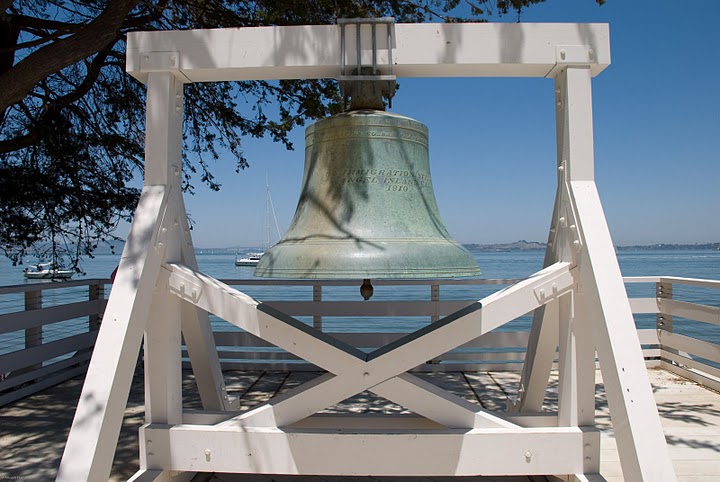

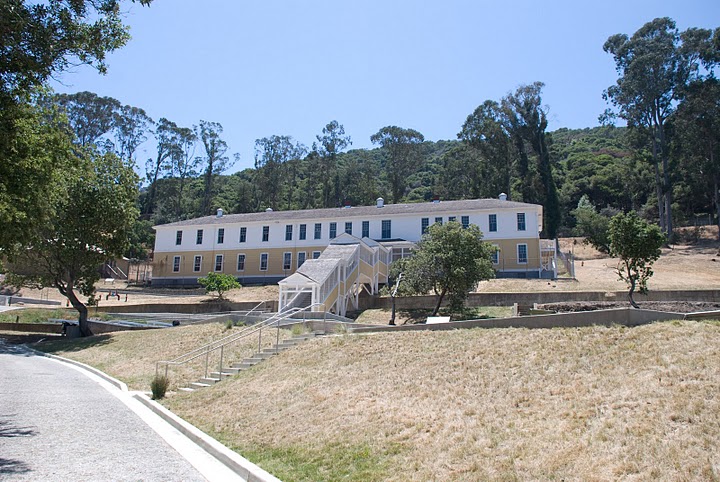 In 1850 President Fillmore declared Angel Island, the second largest island in San Francisco Bay, to be a military reserve. Indeed, during the Civil War, the island was fortified to defend San Francisco Bay from possible attack by Confederate forces. In the 19th century, new arrivals to the U.S. entering at the Port of San Francisco were housed and processed in quarters located at the Pacific Mail Steamship Company docks on the San Francisco waterfront. After the quarters at the docks proved inadequate and unsanitary, a study, authorized in 1904, recommended building a new immigration station on the isolated and nearby Angel Island. In 1905, the War Department transferred 20 acres of land on the north shore of the island, facing away from San Francisco, to the Department of Labor and Commerce as the site for the new immigration station. Architect Walter J. Mathews designed the station compound to include an enclosed detention center with an outdoor area and guard tower as well as an administration building, hospital, powerhouse and wharf, which was later known as China Cove.
Angel Island Immigration Station, sometimes known as "Ellis Island of the West," began construction in 1905 and opened January 21, 1910. Construction of the facility involved leveling a former
In 1850 President Fillmore declared Angel Island, the second largest island in San Francisco Bay, to be a military reserve. Indeed, during the Civil War, the island was fortified to defend San Francisco Bay from possible attack by Confederate forces. In the 19th century, new arrivals to the U.S. entering at the Port of San Francisco were housed and processed in quarters located at the Pacific Mail Steamship Company docks on the San Francisco waterfront. After the quarters at the docks proved inadequate and unsanitary, a study, authorized in 1904, recommended building a new immigration station on the isolated and nearby Angel Island. In 1905, the War Department transferred 20 acres of land on the north shore of the island, facing away from San Francisco, to the Department of Labor and Commerce as the site for the new immigration station. Architect Walter J. Mathews designed the station compound to include an enclosed detention center with an outdoor area and guard tower as well as an administration building, hospital, powerhouse and wharf, which was later known as China Cove.
Angel Island Immigration Station, sometimes known as "Ellis Island of the West," began construction in 1905 and opened January 21, 1910. Construction of the facility involved leveling a former
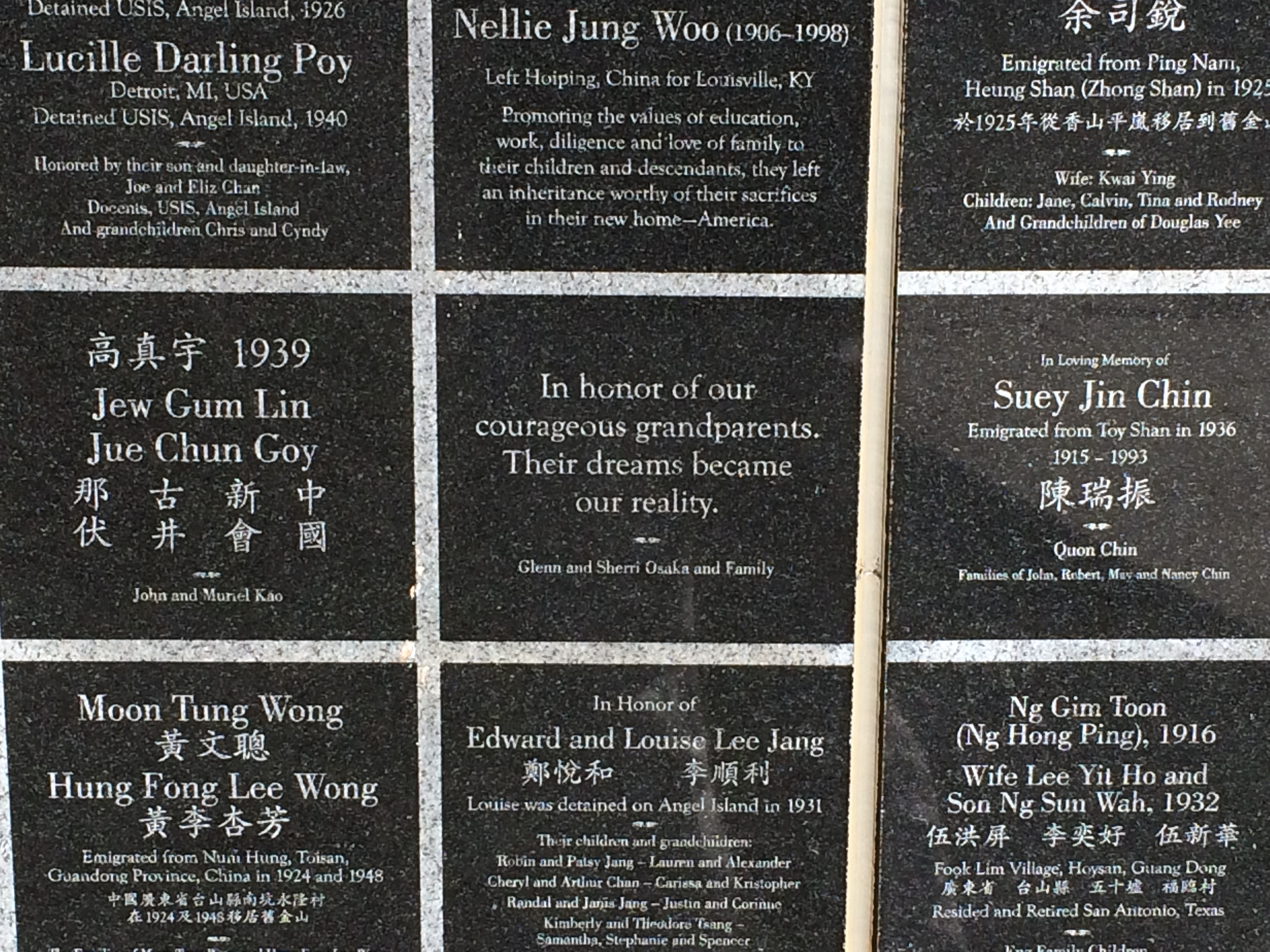 The detention center was in operation for thirty years; however, there were many concerns about sanitation and for the safety of the immigrants at Angel Island. The safety concern was proved to be warranted when, in 1940, fire destroyed the administration building and women's quarters. As a result, all the immigrants were relocated to a landlocked facility in San Francisco and the former Immigration Station was returned to the U.S. Army. During World War II it served as a prisoner of war processing center. In 1943, Congress repealed the Chinese Exclusion Act.
After the war, the Army decommissioned the military installations, reduced its presence on the island, and left the former Immigration Station to deteriorate. It wasn't until 1963 that the island, including the detention facility, was converted to a state park. The buildings were set for demolition but were spared, after Ranger Alexander Weiss discovered Chinese poetry, partially obscured by layers of paint, carved in the wooden walls of the men's barrack in 1970. "These poems carved into the walls remain as a memorial to all of those who passed through the island's harsh detention barracks on their journey to a new life in the U.S."
Today, more than 200 poems have been recovered and restored, and all but the detention centers are currently available to the public. Of the approximately one million immigrants who were processed at the Angel Island Immigration Station, roughly 175,000 were Chinese and 117,000 were Japanese. Between 75 and 82 percent entered America successfully.
The detention center was in operation for thirty years; however, there were many concerns about sanitation and for the safety of the immigrants at Angel Island. The safety concern was proved to be warranted when, in 1940, fire destroyed the administration building and women's quarters. As a result, all the immigrants were relocated to a landlocked facility in San Francisco and the former Immigration Station was returned to the U.S. Army. During World War II it served as a prisoner of war processing center. In 1943, Congress repealed the Chinese Exclusion Act.
After the war, the Army decommissioned the military installations, reduced its presence on the island, and left the former Immigration Station to deteriorate. It wasn't until 1963 that the island, including the detention facility, was converted to a state park. The buildings were set for demolition but were spared, after Ranger Alexander Weiss discovered Chinese poetry, partially obscured by layers of paint, carved in the wooden walls of the men's barrack in 1970. "These poems carved into the walls remain as a memorial to all of those who passed through the island's harsh detention barracks on their journey to a new life in the U.S."
Today, more than 200 poems have been recovered and restored, and all but the detention centers are currently available to the public. Of the approximately one million immigrants who were processed at the Angel Island Immigration Station, roughly 175,000 were Chinese and 117,000 were Japanese. Between 75 and 82 percent entered America successfully.
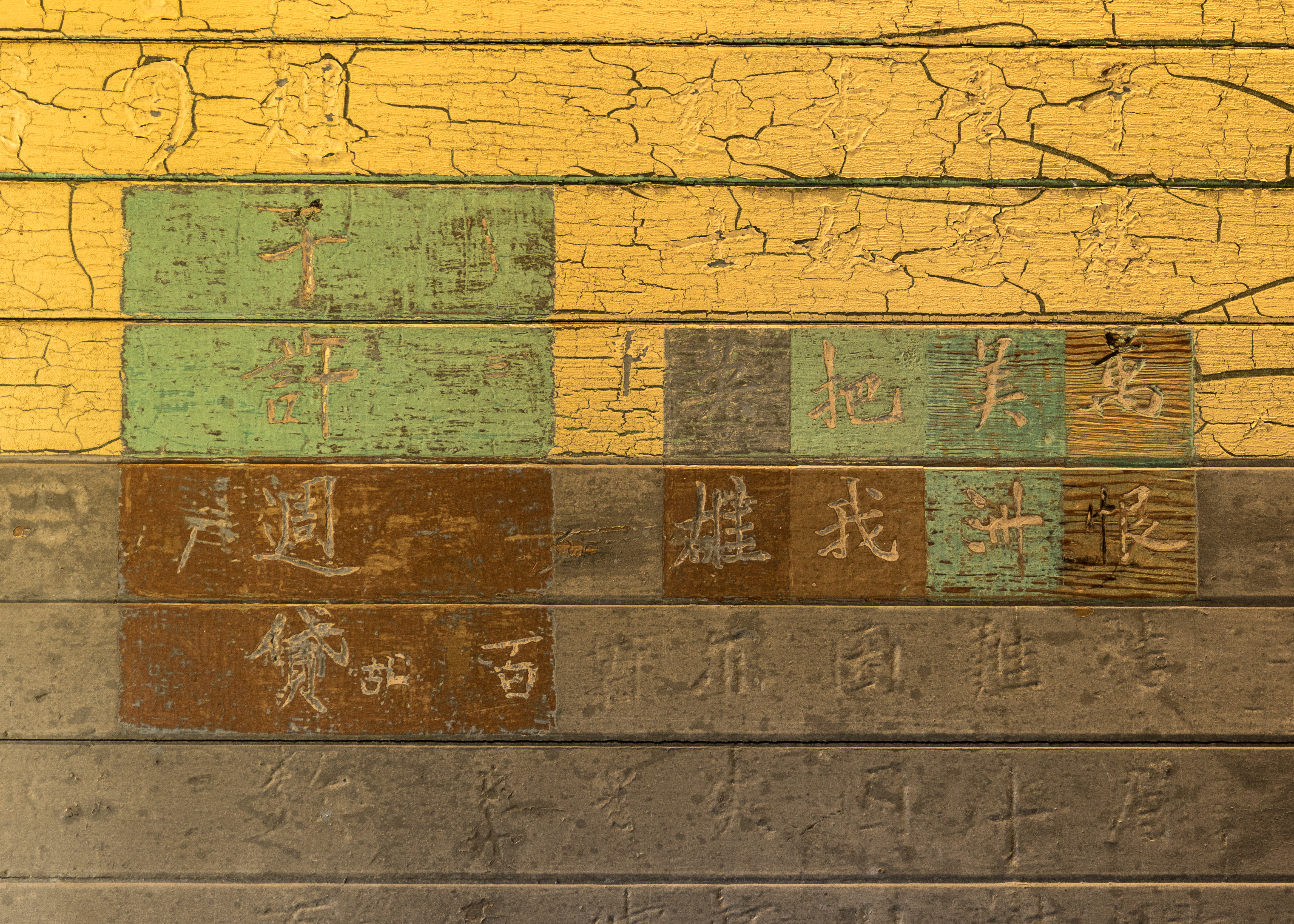 The predominantly Chinese immigrants who were detained at Angel Island were not welcomed in the United States. As recounted by one detained in 1940: "When we arrived, they locked us up like criminals in compartments like the cages at the zoo." Held in these "cages" for weeks, often months, individuals were subjected to rounds of long and stressful interrogations to assess the legitimacy of their immigration applications. Immigrants were made to recall minute details of their lives. On occasion, translators may have not have spoken the particular dialect of the immigrant competently; most Chinese immigrants were from southern China at that time, many spoke
The predominantly Chinese immigrants who were detained at Angel Island were not welcomed in the United States. As recounted by one detained in 1940: "When we arrived, they locked us up like criminals in compartments like the cages at the zoo." Held in these "cages" for weeks, often months, individuals were subjected to rounds of long and stressful interrogations to assess the legitimacy of their immigration applications. Immigrants were made to recall minute details of their lives. On occasion, translators may have not have spoken the particular dialect of the immigrant competently; most Chinese immigrants were from southern China at that time, many spoke
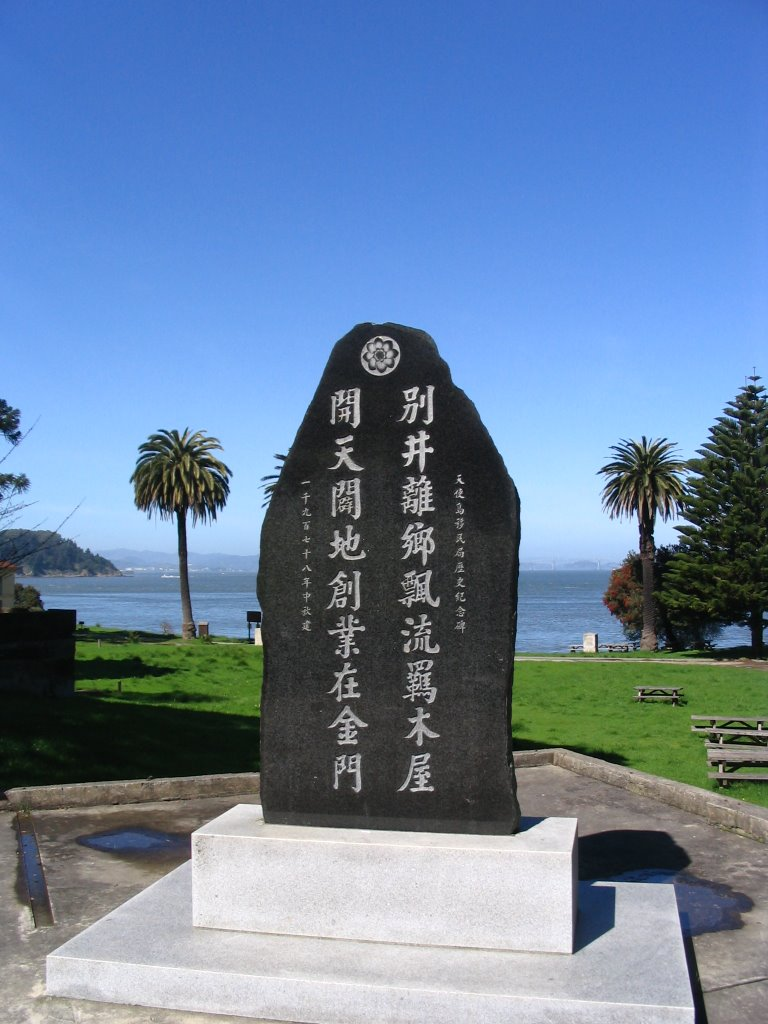 The Angel Island Chinese Monument () is a
The Angel Island Chinese Monument () is a
Angel Island State Park official website
Angel Island Immigration Station Foundation - the non-profit partner of California State Parks and the National Park Service in the work to restore the historic immigration station at Angel Island.
Angel Island Conservancy - Established in 1975, AIC’s primary mission is to facilitate the preservation, restoration and interpretation of historical and natural resources on Angel Island, with the goal of enhancing the visitors’ experiences and building a community to support AISP.
U.S. Immigration Station Tours
Early History of the California Coast, a National Park Service ''Discover Our Shared Heritage'' Travel Itinerary
Angel Island Company, State Parks concessionaire for tours, bike rentals, and catered picnics
* , with 14 other entries for individual buildings
Angel Island materials in the South Asian American Digital Archive (SAADA)
Angel Island-Tiburon Ferry
{{National Register of Historic Places in California Chinese-American history Buildings and structures in Marin County, California National Historic Landmarks in the San Francisco Bay Area Museums in Marin County, California History museums in California Historic American Buildings Survey in California Asian-American issues Historic districts on the National Register of Historic Places in California Museums of human migration National Register of Historic Places in Marin County, California Quarantine facilities in the United States 1910 establishments in California
San Francisco Bay
San Francisco Bay is a large tidal estuary in the U.S. state of California, and gives its name to the San Francisco Bay Area. It is dominated by the big cities of San Francisco, San Jose, and Oakland.
San Francisco Bay drains water f ...
which operated from January 21, 1910 to November 5, 1940, where immigrants entering the United States were detained and interrogated. Angel Island is an island in San Francisco Bay
San Francisco Bay is a large tidal estuary in the U.S. state of California, and gives its name to the San Francisco Bay Area. It is dominated by the big cities of San Francisco, San Jose, and Oakland.
San Francisco Bay drains water f ...
. It is currently a State Park administered by California State Parks and a California Historical Landmark
A California Historical Landmark (CHL) is a building, structure, site, or place in California that has been determined to have statewide historical landmark significance.
Criteria
Historical significance is determined by meeting at least one of ...
. The island was originally a fishing and hunting site for Coastal Miwok Indians, then it was a haven for Spanish explorer Juan Manuel de Ayala
Juan Manuel de Ayala y Aranza (28 December 1745 – 30 December 1797) was a Spanish naval officer who played a significant role in the European exploration of California, since he and the crew of his ship the ''San Carlos'' are the first Europe ...
. Later, it was developed as a cattle ranch, then, starting with the Civil War, the island served as a U.S. Army post.
During the island's Immigration Station period, the island held hundreds of thousands of immigrants, the majority from China
China, officially the People's Republic of China (PRC), is a country in East Asia. It is the world's List of countries and dependencies by population, most populous country, with a Population of China, population exceeding 1.4 billion, slig ...
, Japan
Japan ( ja, 日本, or , and formally , ''Nihonkoku'') is an island country in East Asia. It is situated in the northwest Pacific Ocean, and is bordered on the west by the Sea of Japan, while extending from the Sea of Okhotsk in the n ...
, India
India, officially the Republic of India (Hindi: ), is a country in South Asia. It is the List of countries and dependencies by area, seventh-largest country by area, the List of countries and dependencies by population, second-most populous ...
, Mexico
Mexico (Spanish language, Spanish: México), officially the United Mexican States, is a List of sovereign states, country in the southern portion of North America. It is borders of Mexico, bordered to the north by the United States; to the so ...
and the Philippines
The Philippines (; fil, Pilipinas, links=no), officially the Republic of the Philippines ( fil, Republika ng Pilipinas, links=no),
* bik, Republika kan Filipinas
* ceb, Republika sa Pilipinas
* cbk, República de Filipinas
* hil, Republ ...
. The detention facility was considered ideal because of its isolated location, making it very easy to control immigrants, contain outbreaks of disease, and enforce the new immigration laws. The station is listed on the National Register of Historic Places
The National Register of Historic Places (NRHP) is the United States federal government's official list of districts, sites, buildings, structures and objects deemed worthy of preservation for their historical significance or "great artistic ...
under the title Angel Island, U.S. Immigration Station, and is a National Historic Landmark
A National Historic Landmark (NHL) is a building, district, object, site, or structure that is officially recognized by the United States government for its outstanding historical significance. Only some 2,500 (~3%) of over 90,000 places liste ...
. The station is open to the public as a museum – "a place for reflection and discovery of our shared history as a nation of immigrants".
History


 In 1850 President Fillmore declared Angel Island, the second largest island in San Francisco Bay, to be a military reserve. Indeed, during the Civil War, the island was fortified to defend San Francisco Bay from possible attack by Confederate forces. In the 19th century, new arrivals to the U.S. entering at the Port of San Francisco were housed and processed in quarters located at the Pacific Mail Steamship Company docks on the San Francisco waterfront. After the quarters at the docks proved inadequate and unsanitary, a study, authorized in 1904, recommended building a new immigration station on the isolated and nearby Angel Island. In 1905, the War Department transferred 20 acres of land on the north shore of the island, facing away from San Francisco, to the Department of Labor and Commerce as the site for the new immigration station. Architect Walter J. Mathews designed the station compound to include an enclosed detention center with an outdoor area and guard tower as well as an administration building, hospital, powerhouse and wharf, which was later known as China Cove.
Angel Island Immigration Station, sometimes known as "Ellis Island of the West," began construction in 1905 and opened January 21, 1910. Construction of the facility involved leveling a former
In 1850 President Fillmore declared Angel Island, the second largest island in San Francisco Bay, to be a military reserve. Indeed, during the Civil War, the island was fortified to defend San Francisco Bay from possible attack by Confederate forces. In the 19th century, new arrivals to the U.S. entering at the Port of San Francisco were housed and processed in quarters located at the Pacific Mail Steamship Company docks on the San Francisco waterfront. After the quarters at the docks proved inadequate and unsanitary, a study, authorized in 1904, recommended building a new immigration station on the isolated and nearby Angel Island. In 1905, the War Department transferred 20 acres of land on the north shore of the island, facing away from San Francisco, to the Department of Labor and Commerce as the site for the new immigration station. Architect Walter J. Mathews designed the station compound to include an enclosed detention center with an outdoor area and guard tower as well as an administration building, hospital, powerhouse and wharf, which was later known as China Cove.
Angel Island Immigration Station, sometimes known as "Ellis Island of the West," began construction in 1905 and opened January 21, 1910. Construction of the facility involved leveling a former Coast Miwok
Coast Miwok are an indigenous people that was the second-largest group of Miwok people. Coast Miwok inhabited the general area of modern Marin County and southern Sonoma County in Northern California, from the Golden Gate north to Duncans Poi ...
village site and shell mound, including the interred remains of numerous people. The main difference between Ellis Island
Ellis Island is a federally owned island in New York Harbor, situated within the U.S. states of New York and New Jersey, that was the busiest immigrant inspection and processing station in the United States. From 1892 to 1954, nearly 12 mil ...
and Angel Island was that the majority of the immigrants that traveled through Angel Island were from Asian countries, such as China, Japan, and India. The facility was created to monitor the flow of Chinese immigrants entering the country after the implementation of the Chinese Exclusion Act
The Chinese Exclusion Act was a United States federal law signed by President Chester A. Arthur on May 6, 1882, prohibiting all immigration of Chinese laborers for 10 years. The law excluded merchants, teachers, students, travelers, and diplo ...
in 1882. The Act only allowed entrance to merchants, clergy, diplomats, teachers, and students, barring laborers.
At Ellis Island, only between one and three percent of all arriving immigrants were rejected; at Angel Island, the number was about 18%. The Chinese were targeted due to the large influx of immigrants that were arriving in the United States. Chinese immigrants were seen as a threat because they occupied low-wage jobs, and after the economic downturn during the 1870s, Americans experienced serious unemployment problems. This resulted in increased discrimination against the Chinese, who were labeled as unsuitable due to their appearance and social status. The detention center was opened in 1910, after a series of laws were enacted which significantly restricted Chinese immigration. Immigrants arrived from 84 different countries, with Chinese immigrants accounting for the largest ethnic group to enter San Francisco until 1915 when Japanese immigrants outnumbered the Chinese for the first time.
1910–1940: Process
The length of time immigrants spent detained varied depending on how long the interrogation process lasted. For some it was only a few days and for others it lasted for months, the longest recorded stay being 22 months. This was significantly different from Ellis Island which had more relaxed regulation, and allowed many immigrants to enter the United States on the day of their arrival. Interrogations were extended because of the racial discrimination against Asians that was prevalent at the time. Chinese immigrants, mostly males, claimed to be sons of Chinese individuals who were American citizens, in response to the Chinese Exclusion Act. Since children of citizens are also considered U.S. citizens, regardless of where they are born, it is illegal to deny them entry if they can prove their familial relationship. Immigrants falsely claiming familial ties became known as " paper sons" or "paper daughters". Some American citizens of Chinese descent participated in immigration fraud as purported parents in return for money, or to help other people of the same ethnicity. As a result, an extensive and grueling interrogation process was made to weed out the people for making fraudulent claims. The applicant would then be called before a Board of Special Inquiry, composed of two immigrant inspectors, a stenographer, and, if needed, a translator. Over the course of a few hours or days, the individual would be grilled with specific questions that only the real applicants would know about, for instance, their family history, location of the village, their homes and so on. However, a way around these questions was preparing them months in advance with their sponsors and memorizing the answers. To ensure that the applicant was telling the truth, witnesses from the United States, who were often other family members, were called in to corroborate the applicants story. The "family members" sometimes lived across the country, which extended the process since their testimony had to be verified before proceeding. If there was any doubt that the applicant was lying then the questioning process was prolonged and if deviation was suspected from the testimony presented by the witnesses, then the applicant and the rest of the family would be in jeopardy of deportation. Some applicants appealed the decision of the Board, resulting in a prolonged stay at the detention center because the appeal process was long and tedious. Additionally, the length of stay varied depending on what country the individual was coming from. Japanese immigrants often held documentation from government officials that expedited the process of entering the country. This resulted in the majority of detainees being Chinese since they had no alternative but to endure the questioning. Since the goal of Angel Island was to deport as many Chinese immigrants as possible, the whole process was much more intrusive and demanding for the Chinese compared to other applicants.After 1940
Immigrant perspectives
 The predominantly Chinese immigrants who were detained at Angel Island were not welcomed in the United States. As recounted by one detained in 1940: "When we arrived, they locked us up like criminals in compartments like the cages at the zoo." Held in these "cages" for weeks, often months, individuals were subjected to rounds of long and stressful interrogations to assess the legitimacy of their immigration applications. Immigrants were made to recall minute details of their lives. On occasion, translators may have not have spoken the particular dialect of the immigrant competently; most Chinese immigrants were from southern China at that time, many spoke
The predominantly Chinese immigrants who were detained at Angel Island were not welcomed in the United States. As recounted by one detained in 1940: "When we arrived, they locked us up like criminals in compartments like the cages at the zoo." Held in these "cages" for weeks, often months, individuals were subjected to rounds of long and stressful interrogations to assess the legitimacy of their immigration applications. Immigrants were made to recall minute details of their lives. On occasion, translators may have not have spoken the particular dialect of the immigrant competently; most Chinese immigrants were from southern China at that time, many spoke Cantonese
Cantonese ( zh, t=廣東話, s=广东话, first=t, cy=Gwóngdūng wá) is a language within the Chinese (Sinitic) branch of the Sino-Tibetan languages originating from the city of Guangzhou (historically known as Canton) and its surrounding a ...
. It was difficult to pass the interrogations, and cases were appealed many times over before one could leave the island and enter the United States. Often, successful immigrants produced elaborate instruction manuals that coached fellow detainees in passing interrogations; if anyone was caught with these manuals, they would most likely be deported. Those that failed these tests often feared the shame of returning to China, and some would commit suicide - either before leaving, or on the voyage back to their homeland.
Many of the detainees turned to poetry as expression, spilling their emotions onto the very walls that contained them. Many of these poems were written in pencil and ink, or in brush, and then carved into the wooden walls or floors.Lai, Him Mark, Genny Lim, and Judy Yung. Island: Poetry and History of Chinese Immigrants on Angel Island 1910-1940. Seattle: U of Washington, 1991. Print. Some of the poems are bitter and angry, placid and contemplative, or even hopeful.
Another example:America has power, but not justice. In prison, we were victimized as if we were guilty. Given no opportunity to explain, it was really brutal. I bow my head in reflection but there is nothing I can do.
A more hopeful example:I thoroughly hate the barbarians because they do not respect justice. They continually promulgate harsh laws to show off their prowess. They oppress the overseas Chinese and also violate treaties. They examine for hookworms and practice hundreds of despotic acts.
Twice I have passed through the blue ocean, experienced the wind and dust of journey. Confinement in the wooden building has pained me doubly. With a weak country, we must all join together in urgent effort. It depends on all of us together to roll back the wild wave.
Monument
 The Angel Island Chinese Monument () is a
The Angel Island Chinese Monument () is a monument
A monument is a type of structure that was explicitly created to commemorate a person or event, or which has become relevant to a social group as a part of their remembrance of historic times or cultural heritage, due to its artistic, hist ...
dedicated to Chinese immigrants who entered the United States
The United States of America (U.S.A. or USA), commonly known as the United States (U.S. or US) or America, is a country Continental United States, primarily located in North America. It consists of 50 U.S. state, states, a Washington, D.C., ...
through the immigration station. It was completed in 1978 and placed in 1979. The monument's inscription says "Leaving their homes and villages, they crossed the ocean only to endure confinement in these barracks. Conquering frontiers and barriers, they pioneered a new life by the Golden Gate." The inscription is reminiscent of Chinese poems that were carved into the barracks walls of the immigration station by detained Chinese immigrants.
See also
* California Alien Land Law of 1913 * Immigration and Nationality Act of 1952 (McCarran-Walter Act) *Immigration and Nationality Act of 1965
The Immigration and Nationality Act of 1965, also known as the Hart–Celler Act and more recently as the 1965 Immigration Act, is a federal law passed by the 89th United States Congress and signed into law by President Lyndon B. Johnson. The ...
* Immigration Reform and Control Act of 1986
The Immigration Reform and Control Act (IRCA or the Simpson–Mazzoli Act) was passed by the 99th United States Congress and signed into law by U.S. President Ronald Reagan on November 6, 1986.
The Immigration Reform and Control Act altered U.S ...
* Immigration Act of 1990
The Immigration Act of 1990 () was signed into law by George H. W. Bush on November 29, 1990. It was first introduced by Senator Ted Kennedy in 1989. It was a national reform of the Immigration and Nationality Act of 1965. It increased total, ove ...
* Paper Sons
* Tye Leung Schulze; the first Chinese American civil servant in the United States, who worked at Angel Island.
* Tyrus Wong, imprisoned on Angel Island when he was nine, he was later released and became the chief artist for Disney's ''Bambi
''Bambi'' is a 1942 American animated drama film directed by David Hand (supervising a team of sequence directors), produced by Walt Disney and based on the 1923 book ''Bambi, a Life in the Woods'' by Austrian author and hunter Felix Salten ...
''.
* United States Immigration Station (Detroit, Michigan)
References
External links
Angel Island State Park official website
Angel Island Immigration Station Foundation - the non-profit partner of California State Parks and the National Park Service in the work to restore the historic immigration station at Angel Island.
Angel Island Conservancy - Established in 1975, AIC’s primary mission is to facilitate the preservation, restoration and interpretation of historical and natural resources on Angel Island, with the goal of enhancing the visitors’ experiences and building a community to support AISP.
U.S. Immigration Station Tours
Early History of the California Coast, a National Park Service ''Discover Our Shared Heritage'' Travel Itinerary
Angel Island Company, State Parks concessionaire for tours, bike rentals, and catered picnics
* , with 14 other entries for individual buildings
Angel Island materials in the South Asian American Digital Archive (SAADA)
Angel Island-Tiburon Ferry
{{National Register of Historic Places in California Chinese-American history Buildings and structures in Marin County, California National Historic Landmarks in the San Francisco Bay Area Museums in Marin County, California History museums in California Historic American Buildings Survey in California Asian-American issues Historic districts on the National Register of Historic Places in California Museums of human migration National Register of Historic Places in Marin County, California Quarantine facilities in the United States 1910 establishments in California